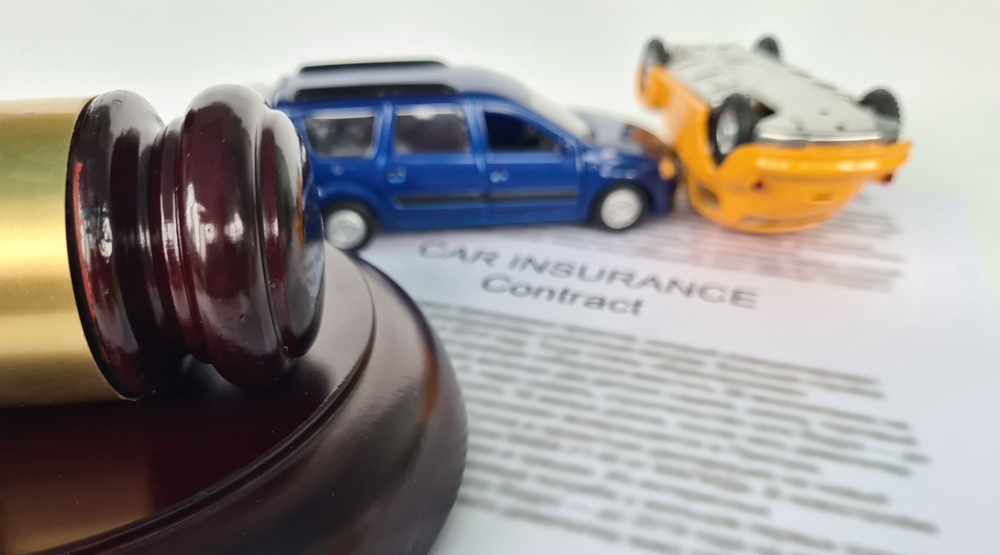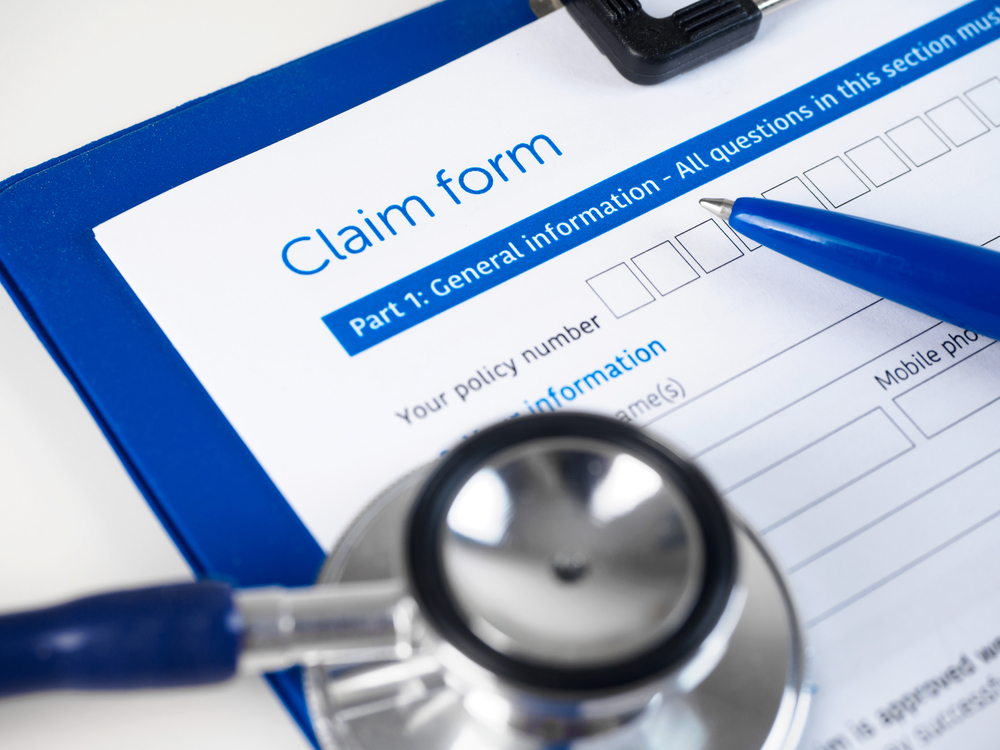Car accidents frequently happen when other drivers engage in distracted driving, violate traffic laws, or drive while under the influence of drugs or alcohol.
If you suffered injuries in a car accident that a negligent driver caused, you may have several legal options. First, your lawyer may file a personal injury claim with the responsible driver’s insurer. However, if the insurance company denies fault for the accident or refuses to compensate you adequately, your lawyer may sue the at-fault driver and begin the litigation process in the court system for you.
During litigation, your Edmonton car accident lawyer can aggressively pursue a favourable settlement offer from the insurance company or take your case to a jury trial or alternative dispute resolution (ADR) proceeding for a favourable result.
Types of Driver Negligence that Lead to Car Accidents
When other people drive negligently and irresponsibly, the chances are good that they will cause a traffic accident that leads to severe injuries.

Road rage, marked by aggressive and hostile behaviour behind the wheel, poses a significant risk for motor vehicle accidents. Drivers succumbing to anger may engage in aggressive tailgating, abrupt lane changes, or even confrontations with other motorists, creating a volatile environment that significantly increases the likelihood of collisions.
Reckless driving, characterized by a disregard for traffic laws and safety, is a major contributor to motor vehicle accidents. Speeding, weaving through traffic, and engaging in erratic maneuvers are common reckless behaviours that heighten the risk of collisions. Such actions compromise the safety of both the reckless driver and others on the road.
Violations of road rules, including running red lights, ignoring stop signs, and failing to yield the right-of-way, create hazardous conditions leading to motor vehicle accidents. These violations disrupt the established order on the road, increasing the probability of intersection collisions and other accidents resulting from a failure to adhere to essential traffic regulations.
Intoxicated driving, often associated with impaired judgment, delayed reaction time, and reduced coordination, significantly elevates the risk of motor vehicle crashes. Drivers under the influence of alcohol or drugs may struggle to maintain proper lane discipline, react slowly to changing road conditions, and exhibit impaired decision-making skills, all of which contribute to an increased likelihood of accidents.
Distracted driving, fueled by the use of mobile phones, navigation systems, or other distractions, further diverts attention from the road and increases the risk of accidents. Texting, talking on the phone, listening to loud music, or engaging in other distracting activities while driving compromises a driver’s ability to react promptly to changing circumstances, increasing the potential for collisions.
The combination of these factors intensifies the probability of motor vehicle accidents. A driver experiencing road rage may engage in reckless maneuvers, violate road rules, or drive distractedly, creating a cascading effect that raises the overall risk of accidents on the road. Similarly, intoxicated driving compounds the dangers associated with road rage, reckless driving, and distractions, amplifying the potential for severe and life-altering collisions.
If you suffered injuries in an accident that a negligent driver caused, a skilled car accident lawyer can promptly investigate your circumstances and file a timely claim or lawsuit on your behalf.
How to Prove the Elements of a Car Accident Case
Proving the liability and damage elements in a car accident case resulting from a negligent driver involves a meticulous gathering of evidence to establish a compelling and comprehensive case. An accident victim can prove liability – or legal responsibility for the car accident – through various means. Eyewitness accounts play a crucial role, providing firsthand perspectives on the events leading up to the collision. Their statements can corroborate or dispute the at-fault driver’s actions, contributing to a clear narrative of the circumstances surrounding the car crash.
Photographic evidence from the accident scene, including property damage, road conditions, and relevant signage, is also instrumental in proving liability. These visual records offer tangible documentation that supports or challenges claims that the involved parties make. Accident reconstruction specialists may further analyze this evidence to provide expert opinions on the sequence of events, determining how the negligence of the at-fault driver caused the accident.
Moreover, obtaining and presenting the official police report is essential. The report documents the responding officer’s observations, statements from involved parties, and any citations that the officer issued (and the reasons for those citations). It also serves as an official record of the car accident, providing valuable insight into the initial assessment of liability by law enforcement.
Establishing damages resulting from the accident involves presenting evidence of the physical and financial consequences that the victim suffered. Medical records detailing injuries, diagnostic reports, and healthcare provider testimonies substantiate the physical harm that the accident victim endured.
Car accident victims can prove lost income through employment records, pay stubs, and statements from employers detailing the income lost during the recovery period. If the injuries result in a diminished capacity to earn, expert testimony may be available to provide a professional opinion on the future financial effects of the accident.
Collecting evidence that illustrates the pain and suffering that the victim experienced is equally vital. Testimony from the victim, family members, and mental health professionals can provide further insight into the emotional and psychological toll of the accident.
In summary, proving liability and damage elements in a car accident case involving a negligent driver demands a thorough approach. Eyewitness accounts, photographic evidence, accident reconstruction analysis, the official police report, medical records, and witness testimony collectively contribute to building a compelling case that establishes both the liability of the at-fault driver and the comprehensive effect of the damages that the victim suffered.
Litigating a Car Accident Case Successfully
Successfully litigating a car accident case arising from another driver’s negligent or reckless behaviour involves navigating various legal processes to seek compensation for the victim’s damages. Commencing the litigation typically begins with the filing of a complaint, outlining the details of the case, including the negligent actions of the at-fault driver, the resulting injuries, and the damages that the victim incurred.

Discovery, a crucial phase of litigation, involves the exchange of information between the parties. This may include written interrogatories, requests for documents, and depositions. Discovery allows both sides to gather evidence, assess the strengths and weaknesses of their cases, and form a comprehensive understanding of the facts at hand.
Depositions play a pivotal role in understanding the perspectives of the involved parties and key witnesses. During discovery depositions, lawyers question individuals under oath, recording their statements to be used as evidence during the trial. This process aids in uncovering valuable information, assessing credibility, and refining legal strategies.
Mediation is a voluntary process where both parties, along with their lawyers, meet with a neutral third party to explore potential settlements. The mediator facilitates negotiations, offering a less adversarial approach to resolving the dispute. If successful, the parties draft a settlement agreement, providing an out-of-court resolution.
Arbitration is another ADR method, although it is typically binding. A neutral arbitrator hears both sides, reviews evidence, and renders a decision. While this process is more formal than mediation, it remains a quicker and less formal alternative to a full trial.
If pre-trial resolution efforts prove unsuccessful, the case proceeds to trial. Both parties present evidence, witnesses, and legal arguments before a judge and, in some cases, a jury. The trial allows each side to make their case, cross-examine witnesses, and present compelling arguments to seek a favourable outcome.
Throughout the litigation process, negotiation skills play a vital role. Lawyers may engage in settlement discussions at various stages, seeking favourable terms for their clients. Negotiation can occur informally between lawyers or more formally through court-ordered settlement conferences.
An experienced car accident lawyer can handle every step of the litigation process for you and work to maximize the financial damages you receive for your injuries.
Taking a Car Accident Case to Trial
A car accident jury trial that unfolds in court follows a structured and formal process, aiming to determine liability and assess damages. The trial commences with the selection of a jury, where both parties, along with their lawyers, participate in the voir dire process. This entails questioning potential jurors to ensure impartiality and select individuals who can objectively assess the case.
Once the jury is finalized, the trial moves to the opening statements. Lawyers for both the car accident victim (the plaintiff) and at-fault party (the defendant) present their case narratives, outlining the evidence they intend to present and the arguments supporting their positions. These statements serve as a roadmap, providing the jury with an initial understanding of the case.
The presentation of evidence follows, with the plaintiff’s lawyer first introducing witnesses, documents, and other relevant materials to establish their case. Witness testimony, expert opinions, and physical evidence are presented to substantiate the plaintiff’s claims and demonstrate the negligent or reckless actions of the at-fault driver.
During this phase, the defence has the opportunity to cross-examine the plaintiff’s witnesses, challenging their credibility and probing for inconsistencies. The defence then presents its own evidence, calling witnesses and introducing documents to counter the plaintiff’s claims. This back-and-forth exchange aims to provide the jury with a comprehensive view of the facts.
Closing arguments mark the conclusion of the trial’s evidentiary phase. Lawyers for both parties deliver persuasive summaries, reiterating key points and urging the jury to interpret the evidence in their favour. This critical stage serves as the final opportunity to influence the jury’s perspective before deliberations.
Following the closing arguments, the judge instructs the jury on the relevant legal principles and the specific issues they must decide. The jury then retires to deliberate, engaging in discussions to reach a unanimous verdict on liability and damages.
After reaching a verdict, the jury returns to the courtroom, and the decision is announced. If the verdict favours the plaintiff, the court proceeds to the damages phase, where the jury determines the compensation that the car accident victim receives for their injuries and losses.
Recovering Monetary Damages in a Car Accident Case
In the aftermath of a car accident, a car accident victim may recover various types of monetary damages, either through a favourable settlement offer from the insurance company or by pursuing litigation in the court system. These damages encompass economic and non-economic elements, striving to compensate the victim for the full extent of their losses.

Economic damages form a significant component of a compensation package. This includes reimbursement for tangible financial losses such as lost income and loss of potential future earning capacity if the victim’s ability to work has been impaired.
Compensation for inconvenience acknowledges the disruptions and inconveniences that the victim experienced (or which they may continue to experience) in their daily life. This category seeks to address the tangible challenges, disruptions to routines, and the overall inconvenience endured as a result of the accident.
Loss of use of a body part refers to compensation for the impairment or loss of function of a specific body part due to the accident. This form of damages recognizes the profound effect on the victim’s physical well-being and seeks to provide restitution for the limitations which the injury imposed.
Lost quality of life reflects the adverse changes in the victim’s overall quality of life resulting from the accident. This includes compensation for limitations on daily activities, hobbies, and overall enjoyment of life resulting from the injuries sustained.
Past and future pain and suffering damages aim to compensate the victim for the physical and emotional distress endured due to the accident. This category encompasses both the immediate pain experienced and the long-term suffering resulting from the injuries.
Punitive damages may be available in cases where the negligent party’s actions were particularly egregious or involved intentional misconduct. These damages act as a form of punishment, aiming to deter similar behaviour in the future.
Loss of consortium recognizes the adverse effect on the accident victim’s relationship with their spouse or family members. This category compensates for the emotional and physical support, companionship, and other non-economic contributions that may be diminished due to the accident.

Speak to a Car Accident Lawyer About Your Options Today
If you recently sustained injuries in a car accident, you need to obtain the legal help that you need right away. An experienced Edmonton personal injury lawyer in your area can pursue a claim with the responsible driver’s insurance company or sue the at-fault driver and pursue litigation in the court system. Whatever you decide, your lawyer will aggressively fight for your legal rights and interests and help maximize the overall compensation award you receive for your injuries.
